There is a majestic Evergreen Dogwood that has thrived in my neighbor’s backyard for years before I discovered its existence. On a clear and bright spring afternoon, my good friend Brad arrived with his camera ready to photograph the magnificent blooms. He and my neighbors let me gawk at the beautiful secret tree hiding behind some tall shrubs in their yard. Now that I’m aware of its existence, I pay careful attention to it every day. It’s like having a celebrity living on the block.
While photographing the 8-foot-tall dogwood, he informed me that the large white “petals” are actually modified leaves called bracts. The bracts surround the true, small greenish-yellow flowers in the center. Sufficiently intrigued, I decided to delve into the world of dogwoods. Read on to learn about common dogwood species that you can grow and admire in your own backyard.
Table of Contents
The Evergreen Dogwood Tree
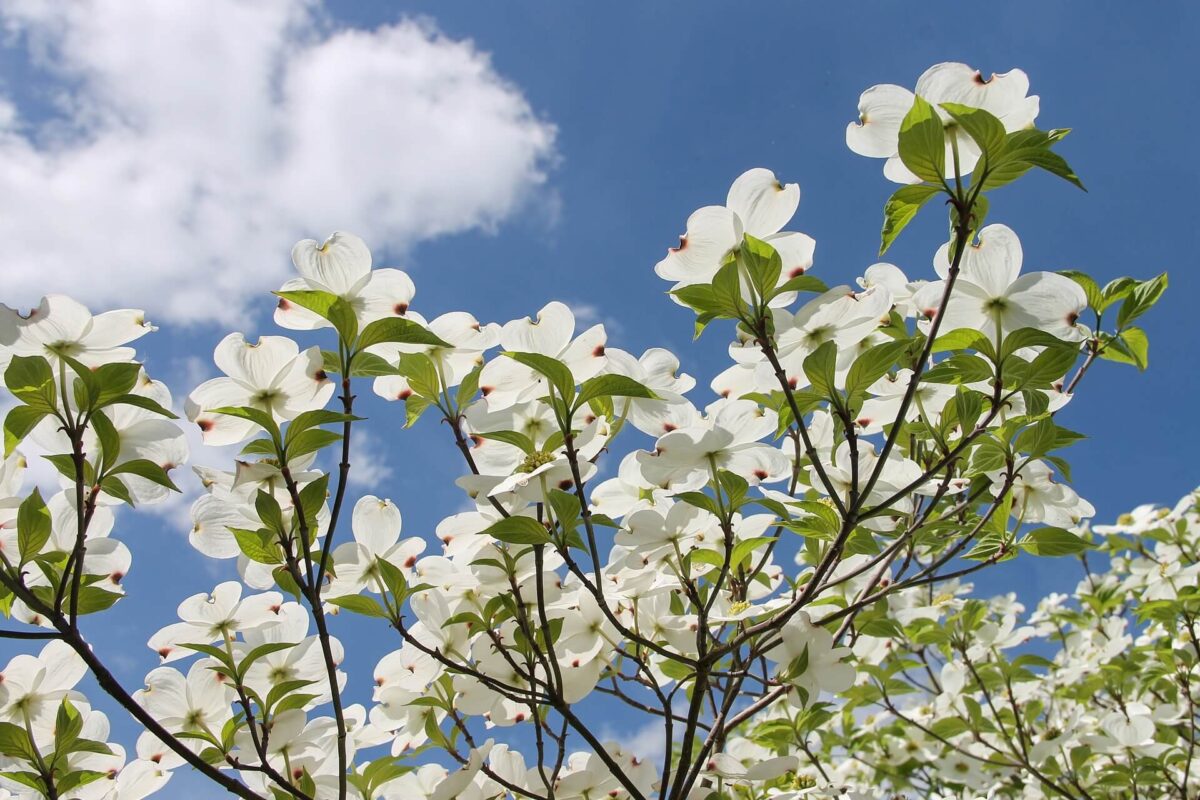
Brad informed me that he had been pruning and caring for this Evergreen Dogwood for the past five years, making sure it got the sun it needed to thrive. He was rightfully proud of how tall it had grown.
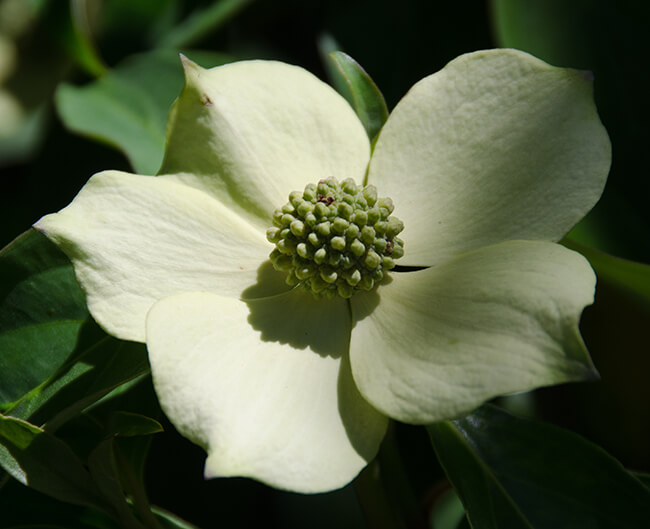
This small tree native to China was introduced in 1980 to the United States by Dr. Ted Dudley of the U.S. National Arboretum. In the early summer, white to creamy-yellow flowers appear throughout its canopy. But it saves the best for fall when these flowers become reddish fruit that somewhat resembles strawberries. Not only are they a sight to behold, but birds also love feasting on them.
Contrary to the name suggests, this dogwood is not considered a reliably evergreen tree because its leaves may fall in the winter in the colder regions where it grows. It will grow well in hardiness zones 8-9.
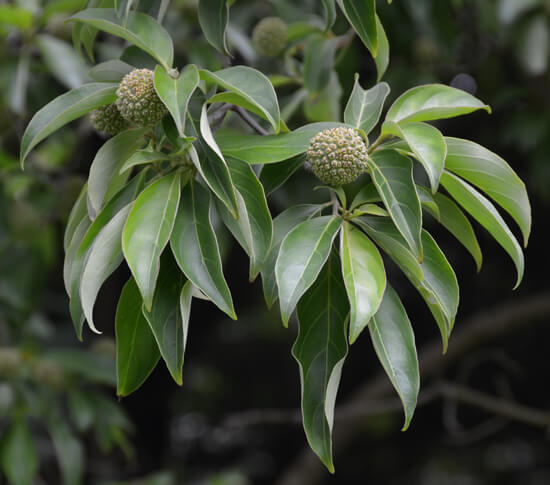
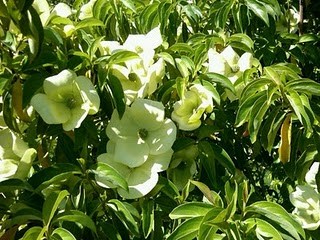
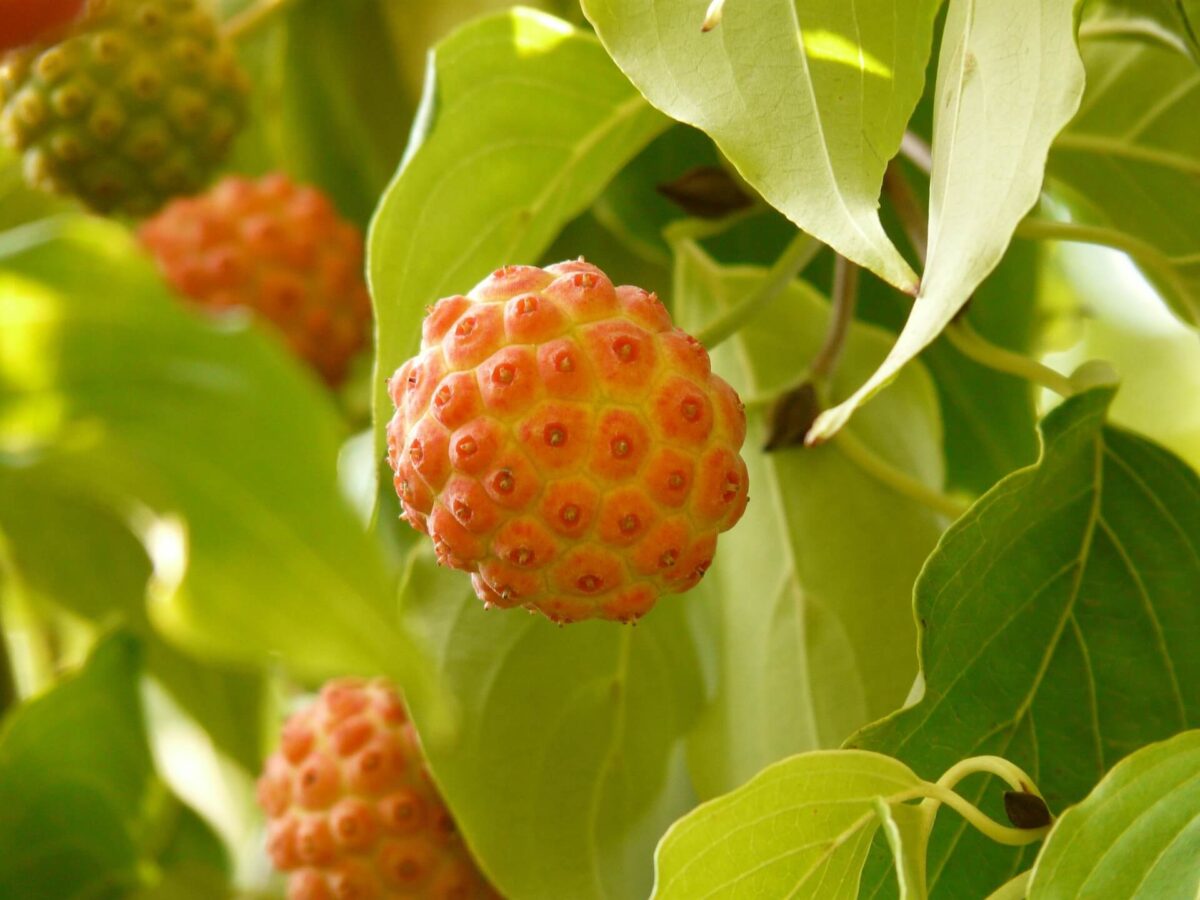
If you’re looking for a wonderful, ornamental tree for your front yard, I recommend a dogwood tree. There are many beautiful and versatile species of dogwood that are interesting to look at all year long, and some even produce edible fruit. There seems to be a dogwood for every need and preference, from shrubs to large trees.
Here’s a list of some great dogwoods to incorporate into your landscape or backyard.
Common Dogwood Tree Species
There are 17 species of dogwood trees native to North America. These species are commonly found on cultivated landscapes, and make a great addition to any yard.
Flowering Dogwood – Cornus florida
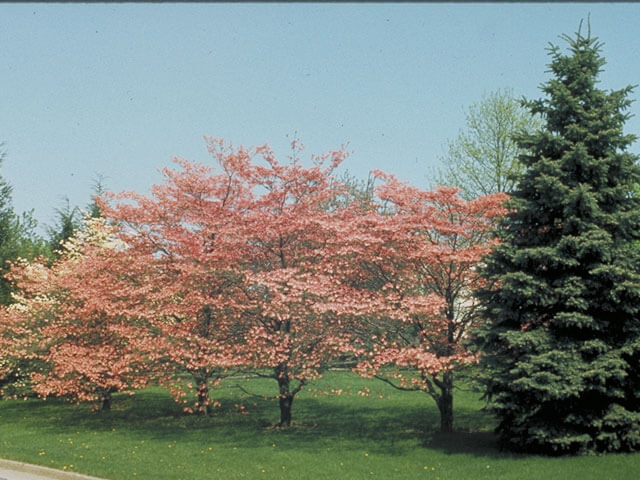
This is likely the tree that will appear when you do an internet search for beautiful dogwood tree blooms. The flowering Dogwood tree bursts into pink and white blooms in late winter or early spring and is followed by lush green foliage.
Its various states make this tree beautiful throughout the year. In late summer, the vibrant flowers give way to bright red berries and in fall the leaves begin to turn dark red. Flowering dogwoods grow to between 12 and 20 feet tall and thrive in full sun or part shade. Those in full sun produce a more vibrant leaf color, but tend to grow shorter, while those in full shade may sport less vibrant colors, but have a more open canopy shape.
This tree is susceptible to anthracnose, a devastating fungal disease that kills trees. DO NOT eat the fruit of this plant, as they are considered to be mildly toxic to humans.
USDA zones: 5-9
Kousa Dogwood – Cornus kousa
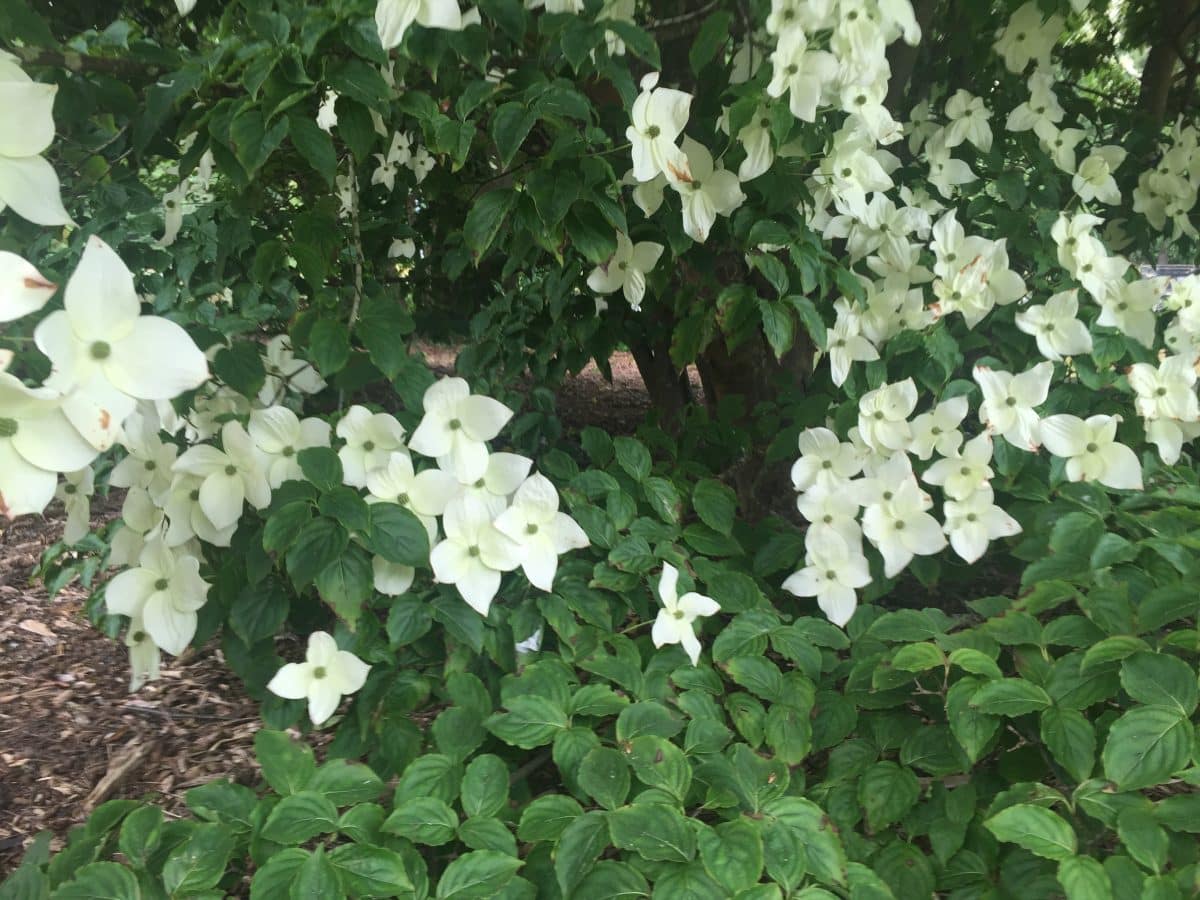
The Kousa Dogwood, native to East Asia, grows to be a small tree or shrub. It flowers a couple of weeks later than the Flowering Dogwood, and produces yellowish-green flowers in spring and light red berries in summer.
Kousa Dogwood berries are edible (though not widely consumed by humans). They create a litter problem when they fall or when birds munch on them, so it’s best not to plant them near a patio or somewhere with a lot of foot traffic. That said, this is another variety that will look great in your yard year-round. This dogwood can tolerate cooler temperatures, and in the fall its leaves turn a mesmerizing, deep red color.
USDA zones: 4-8
Pacific/Mountain Dogwood – Cornus nuttallii

Pacific dogwoods thrive mainly on the West Coast and grow much taller than most dogwoods (up to 66 feet). Like the flowering dogwood, this tree is exceptionally beautiful in the spring and fall with large white flowers and yellow, orange, or red leaves in the fall.
Indigenous people often utilized the Pacific dogwood bark to make brown dye or tea to soothe the stomach. The hardwood has been used for centuries to make everything from wooden daggers to piano keys and golf club heads. The bright red fruits are great treats for deer mice and birds.
The Pacific Dogwood has a relatively low tolerance to frost and somewhat high tolerance to flooding, which is why it is commonly found along stream banks in low-elevation coniferous and coastal forests. It is a versatile tree, as it has great tolerance for shady locations as well as drought conditions. This dogwood species is susceptible to dogwood anthracnose, however, so it’s best to check with a local forestry authority before planting.
USDA zones: 6b-9a
Cornelian Cherry Dogwood – Cornus mas
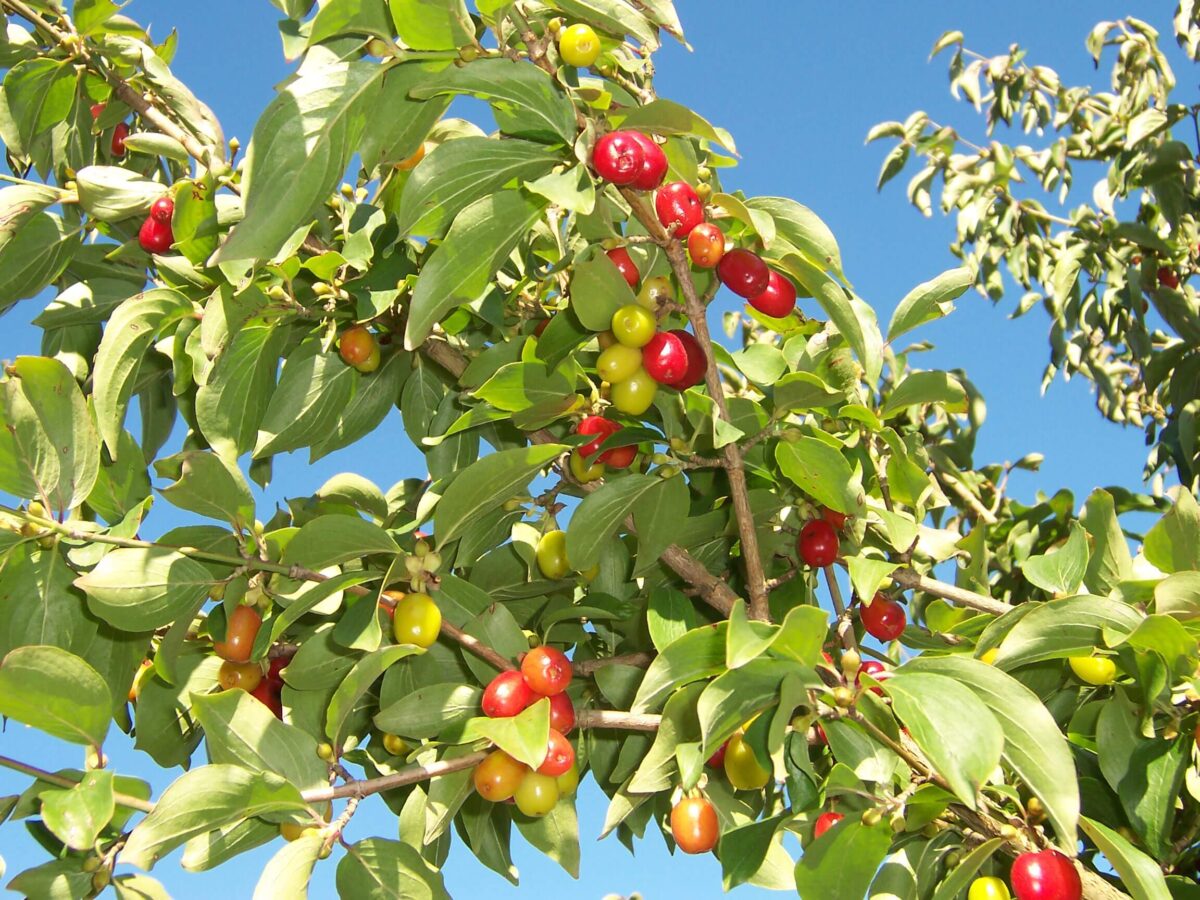
The Cornelian Cherry Dogwood is a shrub-like tree that hails from Eastern Europe and Western Asia. It can grow up to 15-25 feet and produces edible cornelian cherries, which the ancient Greeks used to grow and pickle like olives. The plant is mainly considered to be an ornamental tree in the United States, but people around the world use cornelian cherries for syrups, jams, pies, and even to make cherry wine.
Small, dense groups of yellow flowers bloom in early spring before the leaves emerge. Like most dogwoods, the cornelian cherry offers multi-season interest with early spring flowers and clean-looking summer foliage and fruit. By July, the bright red cherries form and are ripe once they’ve fallen off the tree.
USDA zones: 4-8
Pagoda Dogwood – Cornus alternifolia
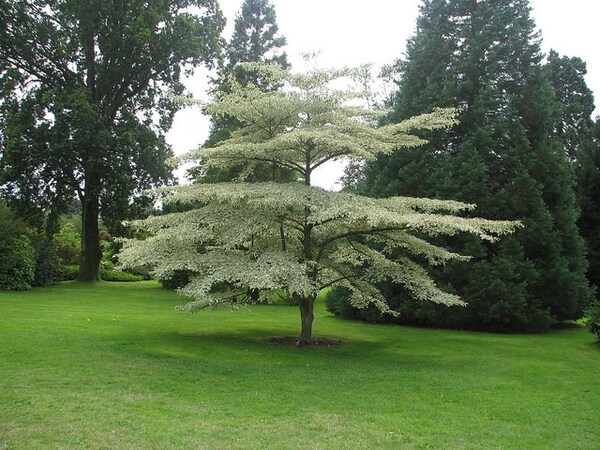
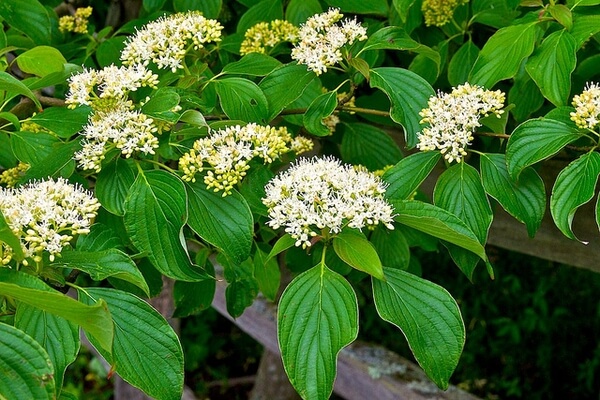
The Pagoda Dogwood is an alternate-leaf shrub in the first several years of growth and can grow to be a 15 to 25-foot tree when mature. This dogwood stays interesting year-round, producing flat clumps of yellowish-white flowers in late spring and dark blue-black berries in the winter months. New leaves emerge with a reddish-purple color and fall foliage usually take on a reddish-orange or copper color.
Like many dogwoods, this plant likes relatively cool soil and prefers full sun to part shade. It is named after a pagoda because of its similar flat-top canopy. There are many unique variegated cultivars, including ‘Argentea’ and ‘Golden Shadows.’
USDA zones: 3-7
Propagating Dogwood Cuttings
Dogwoods are usually propagated by taking stem cuttings from an existing tree and rooting them. The best time to take cuttings is in late spring, after the first bloom and when the stems are slightly brittle.
- Cut a 5-6 inch length of stem from the tip of a branch, about an inch below a set of leaves.
- Remove the bottom set of leaves from the stem, leaving 4-6 leaves on the entire cutting. The wounds created from removing leaves from the stem encourage root growth.
- Place the cuttings in a container lined with damp paper towels and cover them with another damp towel.
- Fill a small pot with either commercial rooting medium or a mixture of sand and perlite. (Regular potting soil will hold too much moisture and may cause the stem to rot.) Moisten the rooting medium with water.
- Lightly cover the bottom 1.5 inches of the stem in rooting hormone. Then, bury the cutting 1.5 inches deep in the rooting medium, and pack the medium tightly around the stem so it stands straight. Keep the leaves off of the soil to prevent rot.
- Create a mini greenhouse by sealing the pot and cutting inside a large plastic bag, making sure the leaves don’t touch the bag.
- Check the cutting once a week to see if it has developed roots by checking the bottom of the pot to see if roots are emerging, or tugging gently on the stem to see if it’s anchored.
- Once roots have developed, remove the plastic bag and place the pot in a sunny window. Make sure the medium is always moist, and fertilize every two weeks with diluted liquid fertilizer until the plant is growing well.
- When the cutting outgrows its pot, repot it in a larger pot and fill it with regular potting soil. Your new well-established dogwoods can be planted outside in the fall.
Common Dogwood Tree Questions
Can people eat dogwood fruit/berries?
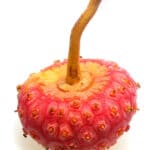
Some species of dogwood fruit are sweet and edible, while others are not. Cornus Capitata fruit is not considered to be edible by humans, while Kousa Dogwood berries (Cornus Kousa) are edible and have been described as tasting somewhat like a less-sweet mango. Cornelian Cherry Dogwood (Cornus mas) cherries are also edible, and are used to make jams, pies and even wine.
It’s best to be sure of which species of dogwood fruit you have before consuming.
Where can Dogwood trees be grown?
Cornus capitata is hardy down to USDA zones 8-9. They can be grown in warm climates all over the world.
How to grow a Dogwood tree?
Dogwoods can be grown in sun or shade, but are partial to more shaded areas. They grow well in moist, highly acidic to slightly alkaline soil, and do well in clay or loam texture soil.
How tall do Evergreen Dogwood trees grow?
Although some have reached heights of up to 50 feet, most will normally grow to a height of 20 to 40 feet.
Different types of Dogwood Trees
Evergreen Dogwood
Flowering Dogwood
Kousa Dogwood
Pacific/Mountain Dogwood
Cornelian Cherry Dogwood
Pagoda Dogwood
Do dogwood trees smell?
Dogwood trees do not generally smell unpleasant to people, but some have claimed they smell like semen. They are sometimes confused with the very smelly Bradford Pear tree.
- About the Author
- Latest Posts
I strive to paint vivid landscapes with my words, bringing the magic of far-off lands and enchanting aromas to life for my readers. Combine passion for exploration and the art of gastronomy in an unending ode to the senses. When I’m not traversing the globe, I find solace in the earth beneath my fingertips, tending to my garden and working on projects around my verdant oasis. MK Library serves as a beacon, guiding fellow travelers and homebodies alike to embrace sustainability, nurturing both our planet and our souls with purpose. Full Bio.

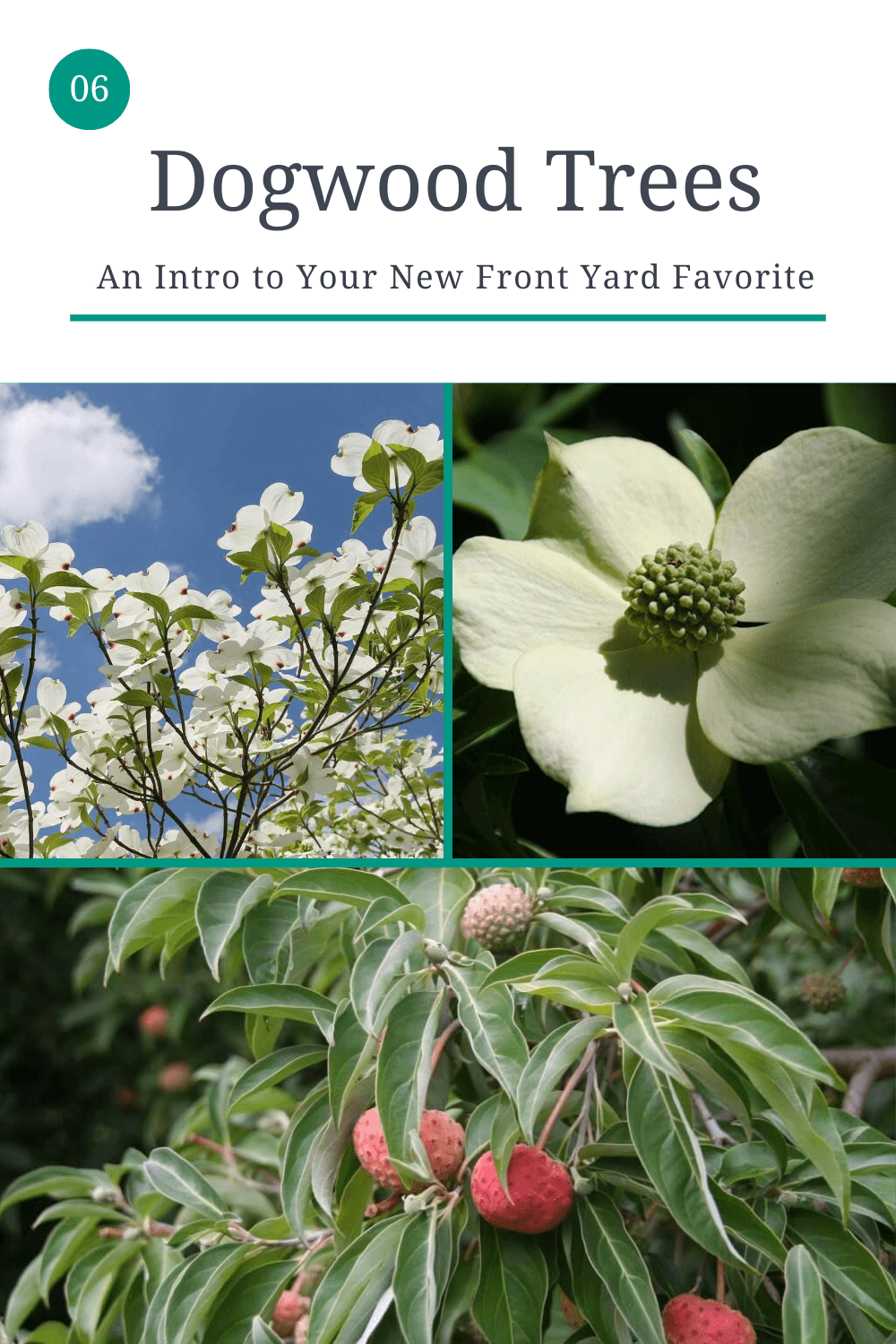
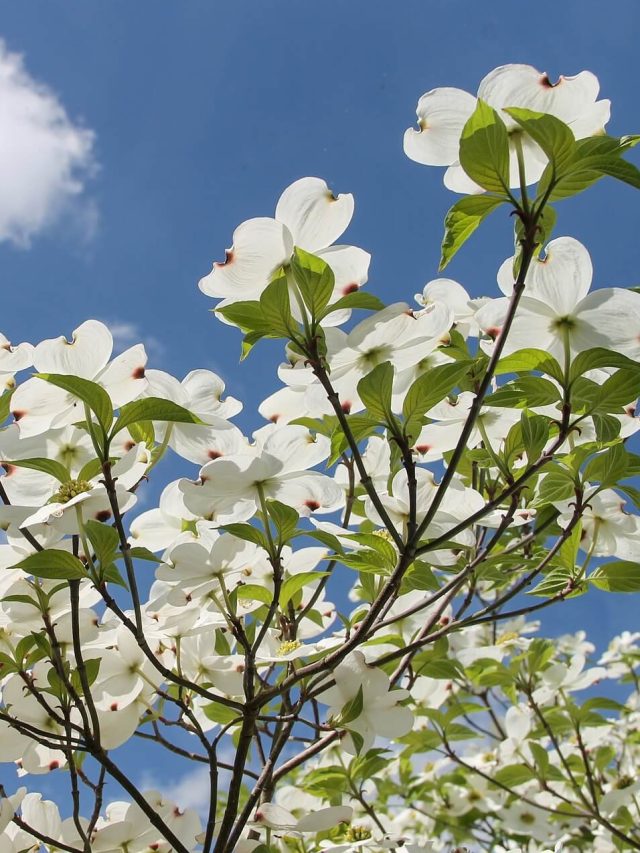


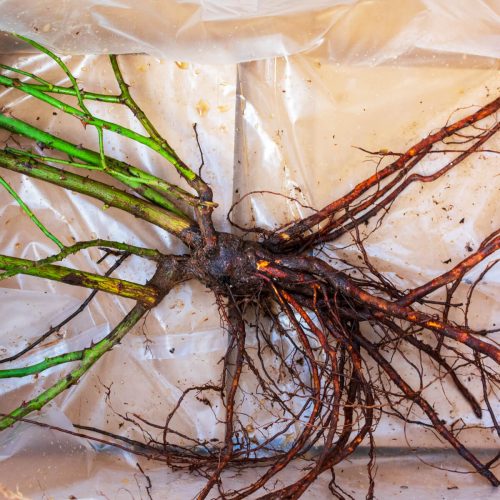

Beautiful! Would your friend be willing to share where he found the Cornus Capitata locally? I am looking for one for my yard.
sweet and juicy, delicious and yummy dummy. you can probably buy some at china town but they are not fresh though, its been frozen and they are expensive. if you ever get a chance travel to southern china (Canton) like in late June-July you can buy them everywhere.
your good
thnx bro